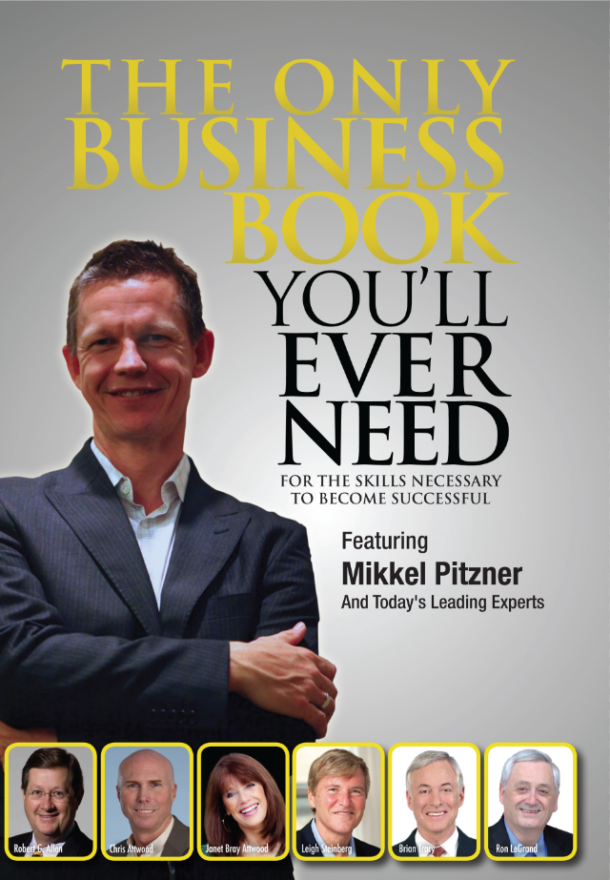
A candid conversation every business owner should have long before they ever plan to sell.
Yesterday, we discussed something most business owners never hear until it’s too late:
Just because you’re ready to sell doesn’t mean your business is ready to be sold.
Emotionally, many are there. Mentally, they’re checked out. They’re browsing retirement communities and planning their exit speech.
But structurally? Financially? Operationally?
The business just isn’t built to hand off, at least not at a premium price.
And that’s the real heartbreaker. Because the gap between what you think your business is worth and what someone is actually willing to pay is often wider than the Grand Canyon.
Today, we’re going to fix that. We’re going to dive into the buyer’s mind and understand exactly what makes a business irresistible, and what sends them running for the exits.
The Real Question Nobody Asks
Here’s what most owners get wrong: They think selling a business is about convincing someone to buy what they’ve built.
Wrong.
Selling a business is about building something buyers desperately want to own.
There’s a massive difference.
The first approach has you pitching, explaining, and justifying. You’re selling uphill, fighting for every dollar, hoping someone sees the value you see.
The second approach has buyers competing for the privilege of writing you a check. You’re in control. You have options. You walk away with maximum value.
So what actually makes a business irresistible to buyers?
Let me take you inside the buyer’s mind.
Inside the Buyer’s Brain: What They Really Want
I’ve sat across the table from hundreds of buyers; private equity firms, strategic acquirers, individual investors. And regardless of their background, they all want the same thing:
A machine that prints money with minimal intervention.
They don’t want to buy your job. They don’t want to step into your shoes and work 60-hour weeks. They want to buy a system that generates predictable profits while they focus on growth, optimization, or their next acquisition.
Here’s exactly what gets them excited:
1. Predictable, Recurring Revenue
Buyers love businesses where they can see next month’s income with confidence. Subscription models, service contracts, maintenance agreements, anything that creates predictable cash flow.
Why? Because predictable revenue means predictable valuations. And predictable valuations mean they can get financing, plan growth, and sleep well at night.
Red flag: If your revenue swings wildly from month to month, buyers see risk. And risk kills valuations.
2. Owner Independence (The Ultimate Test)
Here’s the litmus test every buyer applies: “What happens if the owner gets hit by a bus tomorrow?”
If the answer is “the business collapses,” you’re not selling a business, you’re selling a very expensive job.
The independence markers buyers look for:
- Key employees who can run day-to-day operations
- Systems that don’t require the owner’s constant input
- Customer relationships that extend beyond the owner
- Decision-making processes that don’t bottleneck at the owner’s desk
Story time: I worked with a manufacturing business owner who thought his hands-on approach was an asset. “I know every customer personally,” he’d say. When we put the business on the market, the first three buyers walked away for the same reason: Too much owner dependency. After six months of building systems and empowering his team, he sold for 40% more than his original asking price.
3. Healthy Margins (The Profitability Test)
Buyers don’t just want revenue, they want profitable revenue. A $10 million business with 5% margins is far less attractive than a $5 million business with 25% margins.
Why? Because healthy margins indicate:
- Pricing power (you’re not competing on price alone)
- Operational efficiency
- Market positioning strength
- Room for improvement and growth
The margin reality check: If you’re making less than 15% net profit, buyers see a business that’s working too hard for too little return.
4. Systems and Documentation (The Transferability Factor)
If everything important lives in your head, you’re asking buyers to purchase a mystery box. And mystery boxes sell at massive discounts.
What buyers want to see documented:
- Standard operating procedures for all key processes
- Training manuals and job descriptions
- Customer management systems and histories
- Vendor relationships and contracts
- Financial procedures and controls
- Quality control processes
The brutal truth: The business that looks organized sells for more than the one that runs on tribal knowledge and good intentions.
5. Growth Potential (The Upside Story)
As mentioned yesterday, buyers aren’t just buying your past performance, instead they’re buying your business’ future potential. They want to see clear paths to:
- Geographic expansion
- New product or service lines
- Market penetration opportunities
- Operational improvements
- Technology upgrades that could boost efficiency
The growth story matters: A business with obvious expansion opportunities sells for higher multiples than one that’s hit its ceiling.
6. Diversified Customer Base (The Risk Reduction Play)
If 50% of your revenue comes from one customer, you don’t have a business , you have a dependency. And dependencies terrify buyers.
The ideal distribution: No single customer represents more than 10-15% of revenue. This shows market validation, reduces risk, and proves the business isn’t held hostage by any one relationship. In truth it’s probably more common to see that your biggest client represents upwards 20% of your revenues.
7. Strong Financial Controls (The Trust Factor)
Clean, audited financials aren’t just nice to have, but a must have. Buyers need to trust your numbers, understand your trends, and project future performance.
What buyers expect:
- Monthly financial statements that make sense
- Clear cash flow tracking
- Proper expense categorization
- Audited or reviewed financials for the past 3 years
- Key performance indicators that tell the business story
What Sends Buyers Running (The Deal Killers)
Now let’s flip the script. What makes buyers slam on the brakes and walk away?
Deal Killer #1: Financial Chaos
I’ve seen businesses with great revenue lose buyers because their books were a disaster. Mixed personal and business expenses. No clear profit tracking. Numbers that don’t add up.
Reality check: If you can’t quickly and clearly explain your profitability, buyers assume you’re hiding something.
Deal Killer #2: The Owner Bottleneck
When the owner is the lead salesperson, head of operations, chief decision-maker, and customer service department all rolled into one.
Buyer translation: “This isn’t a business, it’s a person with some equipment.”
Deal Killer #3: Legal and HR Landmines
Outstanding lawsuits, employment issues, regulatory violations, or sloppy contracts. Buyers don’t want to inherit problems.
The due diligence reality: Every skeleton in your closet will be found. Better to clean house before going to market.
Deal Killer #4: Declining Performance
Revenue going down. Margins shrinking. Market share eroding. Buyers don’t want to catch a falling knife.
The timing lesson: If your business is in decline, fix it before you sell it. Or accept a massive discount.
Deal Killer #5: Unrealistic Valuations
Asking $5 million for a business that generates $300k in profit. Thinking your 20 years of hard work automatically equals a premium multiple.
Hard truth: The market doesn’t care about your sweat equity. It cares about future cash flows.
The Automated Millionaire Approach: Building to Sell
Here’s where everything we teach at The Automated Millionaire comes together.
You don’t build a business and then make it sellable. You build it sellable from day one.
Or more realistically, the moment you realize you might want to sell someday — you begin the transformation.
This isn’t just exit planning. This is wealth building. Because the business that’s ready to sell is the business that generates the most value for you while you own it.
The Value Installation Process
Phase 1: Foundation Building (Start Now)
Organize your financial house:
- Clean up your books completely
- Separate personal and business expenses
- Install proper financial controls and reporting
- Start tracking key performance indicators monthly
Document everything:
- Create standard operating procedures for every critical process
- Build training manuals for key positions
- Document customer relationships and histories
- Systematize vendor relationships and contracts
Build your management layer:
- Identify and develop key employees
- Create clear roles and responsibilities
- Install decision-making processes that don’t require you
- Start delegating operations management
Phase 2: Optimization (6-18 months)
Improve your margins:
- Analyze and optimize pricing strategies
- Eliminate unprofitable products or services
- Streamline operations for efficiency
- Renegotiate vendor contracts and terms
Diversify your revenue:
- Reduce customer concentration risk
- Develop multiple revenue streams
- Create recurring revenue opportunities
- Build scalable service offerings
Strengthen your team:
- Hire or promote key management positions
- Cross-train critical functions
- Install performance management systems
- Create succession plans for key roles
Phase 3: Market Positioning (3-6 months before sale)
Professional presentation:
- Prepare compelling business summaries
- Create clean financial packages
- Develop growth projections and market analysis
- Position competitive advantages clearly
Buyer identification:
- Research strategic and financial buyers
- Understand what different buyer types value
- Prepare for different deal structures
- Plan negotiation strategies
The Psychology of Premium Valuations
Here’s something most business brokers won’t tell you: Premium valuations aren’t just about numbers, butalso about buyer psychology.
Buyers pay more when they:
- Feel confident about the business’s future
- See growth potential they can execute on
- Trust the financial information you’re providing
- Believe the transition will be smooth
- Understand the competitive advantages you’ve built
This is why preparation matters so much. It’s not just about having the right numbers, but about presenting a business that makes buyers excited to own it.
The Compound Effect of Preparation
Here’s what most owners don’t realize: Every month you spend preparing compounds your value.
Month 1-6: Clean up operations, improve margins, document processes Result: 20-30% value increase
Month 6-12: Build management team, diversify revenue, optimize pricing Result: Additional 25-40% value increase
Month 12-18: Professional positioning, buyer preparation, negotiation strategy Result: Additional 15-25% value increase
Total impact: 60-95% value increase over 18 months of focused preparation.
Real example: I mentioned yesterday a service business that was ready to accept a $1.8 million offer. After 16 months of preparation, they sold for $4.2 million. Same business. Same market. Different level of preparation.
Your Business Sells Only Once
You get one shot at this.
One opportunity to convert decades of work into generational wealth.
One chance to prove that all those late nights, difficult decisions, and sacrifices were worth it.
You cannot go back and do it over.
So why would you wing it? Why would you accept whatever the market offers instead of commanding what you’re truly worth?
The businesses that sell for maximum value aren’t just the biggest or the most profitable. They’re the best prepared.
They’re the ones that look irresistible before they hit the market. They’re the ones that make buyers compete instead of negotiate.
The Real ROI of Exit Preparation
Let’s talk numbers for a second.
Typical unprepared sale:
- 12-24 months on market
- 2-4x EBITDA multiple
- High deal risk and contingencies
- Significant stress and uncertainty
Properly prepared sale:
- 6-9 months on market
- 4-8x EBITDA multiple
- Lower deal risk, cleaner terms
- You control the process
The difference on a $1M EBITDA business:
- Unprepared: $2-4M sale price
- Prepared: $4-8M sale price
That’s a $2-4 million difference for 12-18 months of focused preparation work.
Show me another investment that delivers that kind of return.
This Is What We Do at The Automated Millionaire
My Selling Your Business program exists because I’ve seen too many owners leave millions on the table.
Not because their businesses weren’t valuable. But because they weren’t prepared to demonstrate that value to the market.
We walk through the entire process:
✅ Proper valuation methods — and how to increase value before going to market
✅ Financial preparation — getting your books investor-ready
✅ Operational systematization — building a business that runs without you
✅ Team development — creating the management structure buyers want to see
✅ Growth positioning — showing buyers the upside potential
✅ Legal and tax optimization — structuring for maximum after-tax proceeds
✅ Buyer identification and vetting — finding the right buyers at the right price
✅ Negotiation strategies — getting the best terms and highest price
✅ Deal structure — minimizing risk while maximizing value
Whether you’re thinking about selling in 6 months or 6 years, the work starts now.
Because the day you decide you want to sell isn’t the day you start preparing to sell. That day was yesterday.
Your Next Move
Stop thinking about your business like it’s your job.
Start thinking about it like it’s your investment portfolio.
Because someday, sooner than you think, you’re going to want to cash out that investment.
And when that day comes, you’ll either be prepared to maximize your return…
Or you’ll take whatever you can get.
The choice is yours.
But the time to choose is now.
Don’t wait until you’re burned out, stressed out, or forced out.
Start building the business that buyers will fight to own.
Start preparing for the exit that sets you up for life.
Because you only sell once.
Make it count.
Written for business owners who refuse to settle for “good enough” when they exit.
Ready to build a business that sells for maximum value? The preparation starts now – not when you’re ready to walk away.


